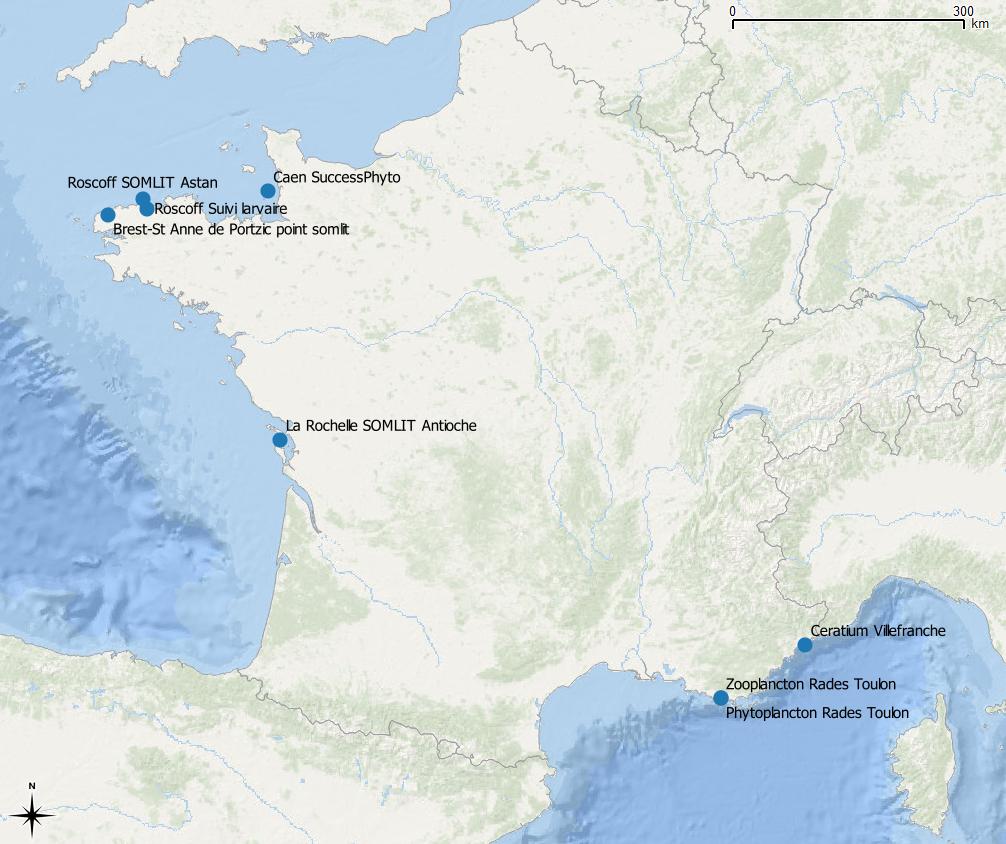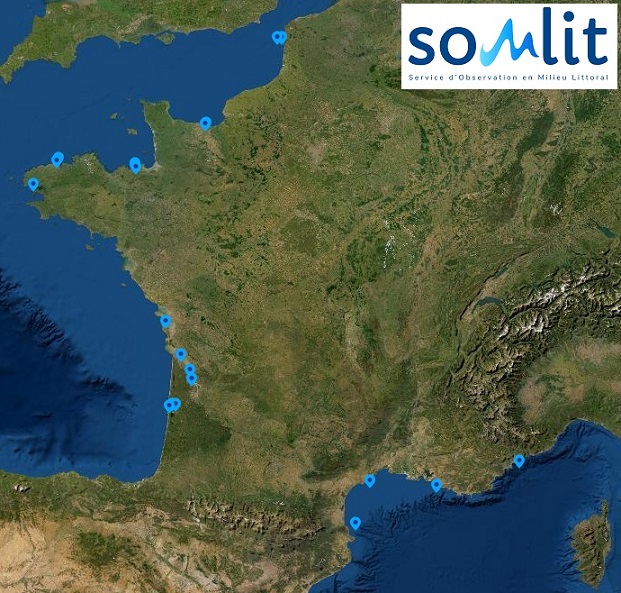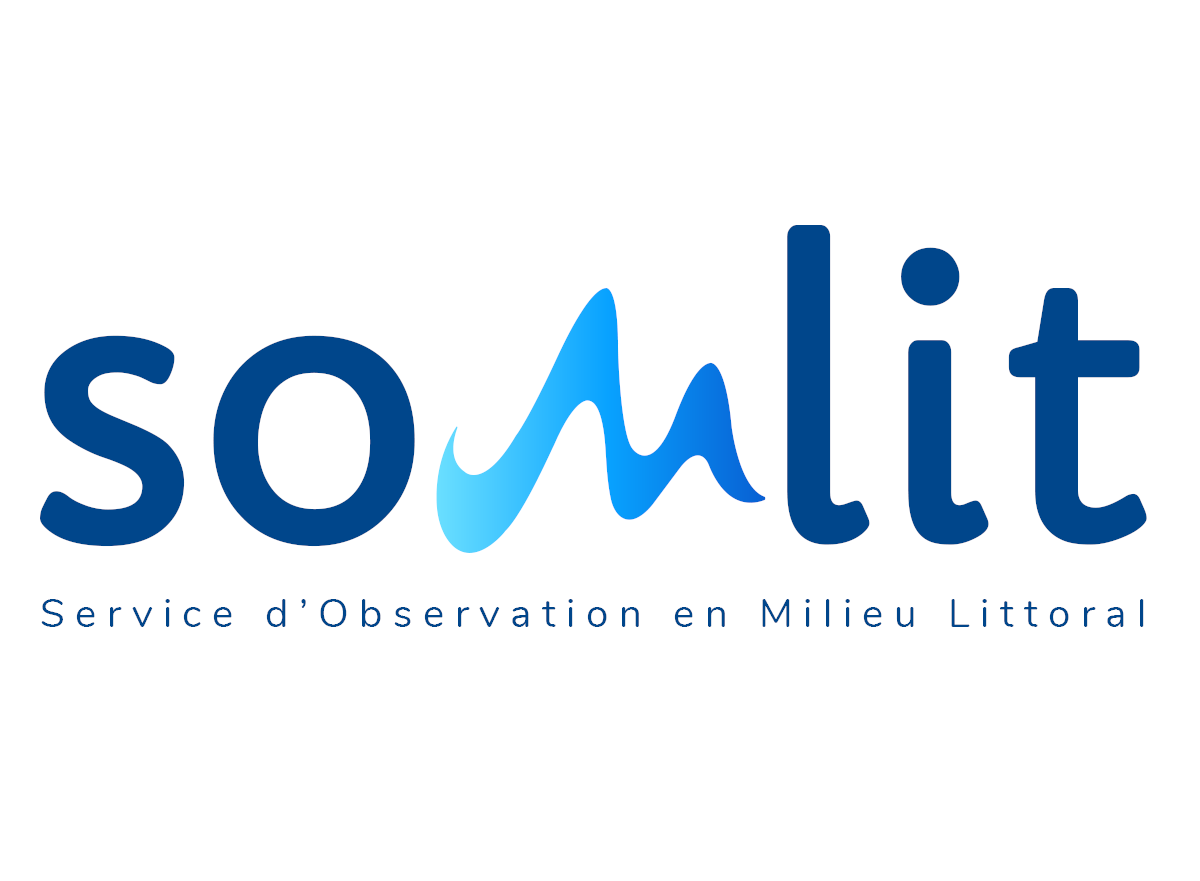SOMLIT
Type of resources
Available actions
Topics
Keywords
Contact for the resource
Provided by
Years
Formats
Representation types
Update frequencies
status
Scale
-

The PHYTOBS-Network dataset includes long-term time series on marine microphytoplankton, since 1987, along the whole French metropolitan coast. Microphytoplankton data cover microscopic taxonomic identifications and counts. The whole dataset is available, it includes 25 sampling locations. PHYTOBS-Network studies microphytoplankton diversity in the hydrological context along French coasts under gradients of anthropogenic pressures. PHYTOBS-Network allows to analyse the responses of phytoplankton communities to environmental changes, to assess the quality of the coastal environment through indicators, to define ecological niches, to detect variations in bloom phenology, and to support any scientific question by providing data. The PHYTOBS-Network provides the scientific community and stakeholders with validated and qualified data, in order to improve knowledge regarding biomass, abundance and composition of marine microphytoplankton in coastal and lagoon waters in their hydrological context. PHYTOBS-Network originates of two networks. The historical REPHY (French Observation and Monitoring program for Phytoplankton and Hydrology in coastal waters) supported by Ifremer since 1984 and the SOMLIT (Service d'observation en milieu littoral) supported by INSU-CNRS since 1995. The monitoring has started in 1987 on some sites and later in others. Hydrological data are provided by REPHY or SOMLIT network as a function of site locations.
-

The Arcachon bay is a meso- / macro-tidal (0.8 to 4.6 m), semi-enclosed lagoon of 180 km² located on the South-western coast of France. Three main water masses are described in this bay: (i) the external neritic waters (ENW) directly influenced by the adjacent oceanic waters, (ii) the intermediate neritic waters (ItNW) and (iii) the inner neritic waters (InNW) more influenced by the continental inputs. The watershed of the Arcachon bay, mainly covered by forests, has an area of 3500 km² and the bay is considered as poorly anthropised. It hosts the largest Zostera noltei seagrass meadow in western Europe and is an important site for oyster farming and Manilla clam production. Since 1997, Arcachon Bay waters are monitored for hydrological and bio-geochemical parameters by the “Environnements et Paléoenvironnements Océaniques et Continentaux” (EPOC) Research Unit of the University of Bordeaux-CNRS, first in one single station (Eyrac), then on 2 complementary sites since 2005 (Bouee13 and Comprian). The monitoring is carried out within the national framework of the “SOMLIT” (“Service d’Observation en Milieu Littoral”) which is a French multi-site monitoring network initiated in the mid-1990s. SOMLIT is based on a joint strategy for 19 sites belonging to 12 ecosystems that are distributed over the three maritime facades of mainland France, i.e. the English Channel, the Atlantic Ocean and the Mediterranean Sea. Sampling of surface water samples is performed fortnightly at high tide for a group of 15 parameters (temperature, salinity, dissolved oxygen, pH, nitrate, nitrite, ammonium, phosphate, silicate, suspended matter, chlorophyll a, concentrations and isotopic ratios of particulate organic carbon and nitrogen) and 8 flow cytometry biological variables of pico- and nanoplankton. Vertical profiles of multiparametric probes concerning 4 parameters (temperature, salinity, fluorescence, PAR) are also performed. Given the significant diversity of coastal ecosystems where SOMLIT’s stations are located, strict and joint guidelines with regards to sampling strategy, measurement methods and data qualification and storage are paramount in order to make FAIR data available to users. The whole data acquisition strategy is carried out within the framework of the SOMLIT quality system formalized in 2006-2007 by referring to the ISO 17025: 2017 standard “General requirements for the competence of testing and calibration laboratories”. Unified sampling and analysis protocols are based on recognized disciplinary standards and on the expertise of the research teams. The scientific objectives of SOMLIT are 1) to characterize the multi-decadal evolution of coastal ecosystems; 2) to determine the climatic and anthropogenic forcings and 3) to make data and logistical support available for research activities and other observation activities. SOMLIT is therefore a research tool providing large datasets that also serve as logistical support for related research actions (from seasonal to long-term studies). Two additional national networks operate at the same SOMLIT sites: “COAST-HF” network performs high-frequency measurements (automated in situ measurements every 10 to 20 minutes) and “PHYTOBS-network” provides microphytoplankton biodiversity data. SOMLIT, COAST-HF and PHYTOBS are elementary networks of the Research Infrastructure “Infrastructure Littorale et Côtière” (ILICO) and are National Observation Services (SNO) of the Institut National des Sciences de l'Univers (INSU).
-

The SOMLIT-SOGIR time-series data characterize the hydrology of the Gironde Estuary ecosystem, located in the South-western France and flowing into the Bay of Biscay. Monthly-like measurements have been undertaken since 1997 by the OASU and EPOC teams (Univ. Bordeaux/CNRS). The SOMLIT-SOGIR time series is a part of the French monitoring network SOMLIT (https://www.somlit.fr/), labelled by the CNRS as a national Earth Science Observatory (Service National d’Observation : SNO). It aims to detect the long-term evolution of monitored ecosystems including both natural and anthropogenic forcings. Implemented at three sites (PK 30: 45.06833°N, 0.63833°W; PK 52: 45.24667°N, 0.725°W; PK 86: 45.5167°N, 0.95°W), the SOMLIT-SOGIR time series is among the oldest long-term coastal observation time series of the French Research Infrastructure dedicated to coastal ocean observations (RI ILICO, https://www.ir-ilico.fr). SOMLIT-SOGIR samples are collected at 1m below the water surface and 1m above the floor, at high and low tide, during slack water. Samples collected are analysed for 15 core parameters: water temperature and salinity, dissolved oxygen, pH, ammonia, nitrate, nitrite, phosphate, silicic acid, suspended particulate matter, particulate organic carbone, particulate nitrogen, chlorophyll a, delta15N and delta13C. CTD-PAR-profile is also performed at site PK86 during high tide. The SOMLIT network quality management system is in line with the ISO/IEC 17025:2017 standard: “General requirements for the competence of testing and calibration laboratories”. Further information on standard operating procedures for sample collection and data acquisition are available at: https://www.somlit.fr/parametres-et-protocoles. For more information on the quality flagging scheme: https://www.somlit.fr/codes-qualite/.
-

La base de données PELAGOS regroupe des données de biodiversité de l’écosystème pélagique côtier (dont des séries temporelles). L’un des objectifs est d’exploiter l’information biologique acquise, pour répondre à des questions scientifiques concernant par exemple les facteurs qui contrôlent la distribution et l’abondance des organismes pélagiques à différentes échelles spatiales et à différentes échelles de temps. Ces données présentent le suivi du site SOMLIT-Astan (Station Biologique de Roscoff) faisant partie du RESOMAR et concernent le comptage taxinomique phytoplancton (1 mètre de profondeur) de 2006 à 2015.
-

La base de données PELAGOS regroupe des données de biodiversité de l’écosystème pélagique côtier (dont des séries temporelles). L’un des objectifs est d’exploiter l’information biologique acquise, pour répondre à des questions scientifiques concernant par exemple les facteurs qui contrôlent la distribution et l’abondance des organismes pélagiques à différentes échelles spatiales et à différentes échelles de temps. Ces données présentent le suivi du site SOMLIT - Antioche de La Rochelle (LIENSs - LIttoral ENvironnement et Sociétés) faisant partie du RESOMAR et concernent le comptage taxinomique phytoplancton (1 mètre de profondeur) de 2012 et 2013.
-

Le réseau de stations SOMLIT (Service d'Observation en Milieu LITtoral) a pour objectif d'observer à moyen et à long terme l'environnement du littoral grâce aux 20 sites répartis sur 12 stations marines autour du littoral de la métropole. Ces données de 1997 à 2021 renseignent notamment sur le suivi bi-mensuel de la température, salinité, oxygène dissous, le potentiel hydrogène (pH), concentration d'ammonium (NH4), nitrates (NO3), nitrites (NO2), phosphates (PO4), silicates (SiOH4), carbone organique particulaire (COP), azote organique particulaire (NOP), matières en suspension (MES), et chlorophylle A (Chla). Elles renseignent aussi les isotopes stables de l'azote (δN15) et du carbone (δC13) ainsi que le compartiment pico-nano-planctonique. Les profils de sonde multiparamétriques (CTD) permettent enfin de décrire l’ensemble de la colonne d’eau.
-

Le réseau de stations SOMLIT (Service d'Observation en Milieu LITtoral) a pour objectif d'observer à moyen et à long terme l'environnement du littoral grâce aux 19 sites répartis sur 10 stations marines autour du littoral de la métropole. Ces données de 2006 à 2016 renseignent notamment sur le suivi bi-mensuel de la température, salinité, oxygène dissous, le potentiel hydrogène (pH), concentration d'ammonium (NH4), nitrates (NO3), nitrites (NO2), phosphates (PO4), silicates (SiOH4), carbone organique particulaire (COP), azote organique particulaire (NOP), matières en suspension (MES), et chlorophylle A (Chla). Elles renseignent aussi les isotopes stables de l'azote (δN15) et du carbone (δC13) ainsi que le compartiment pico-nano-planctonique.
-

Fichier présentant les données d'origine et la méthode de détermination des coûts inhérents au volet "phytoplancton" du service d'observation en milieu marin, SOMLIT pour l'année de référence 2017
-

La problématique concerne l'impact du changement global sur les zones côtières et son importance relative par rapport aux activités humaines locales (global vs local). L'objectif général de SOMLIT est orienté vers la détection de ce forçage en zones côtières fortement influencées par les impacts locaux des activités humaines. L'étude du littoral français dans son ensemble, rendue possible par le choix de sites à situation de normalité, d'un suivi de paramètres pertinents, d'un échantillonnage bimensuel et de la mise en place d'une charte qualité, permet une approche multi-paramètres et multi-sites.
 Catalogue PIGMA
Catalogue PIGMA